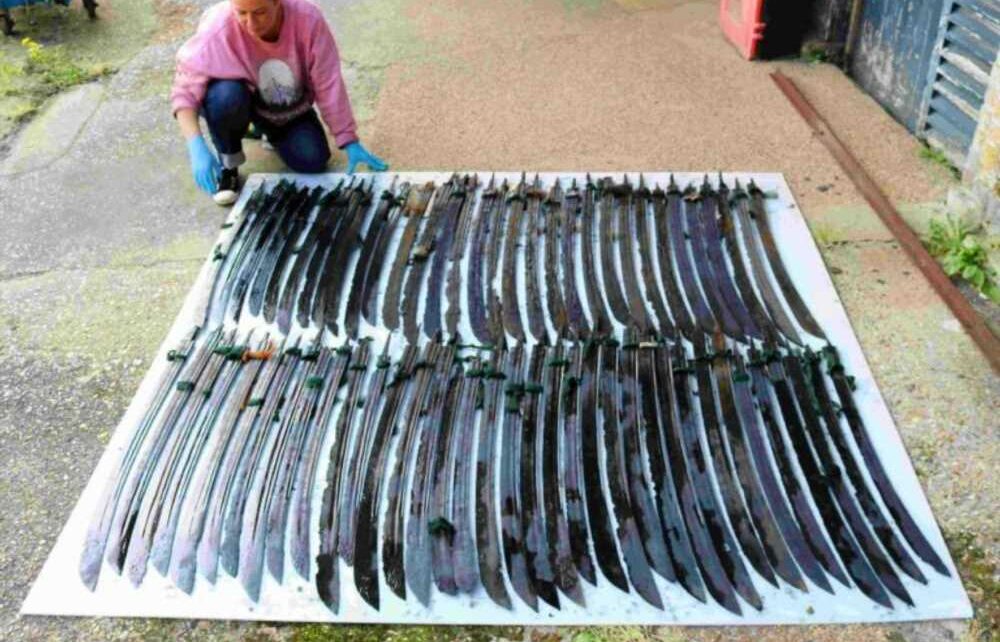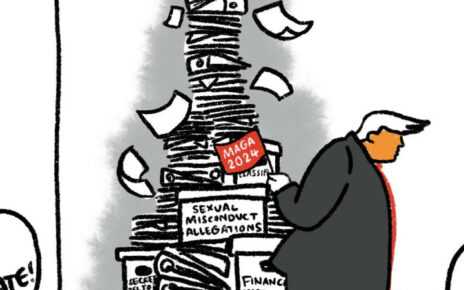THE sunken bounty of a 300-year-old shipwreck off the British coast has been revealed after it was dragged up from the deep.
A cache of coins and sabres are among the 2,500 artefacts recovered from the wreckage of the 18th-century Dutch ship, the Rooswijk.
It sank to the depths on January 9, 1740, as it set sail for Jakarta from the Netherlands shortly after the treacherous journey began.
The Dutch East India Company ship became lost in a blizzard and battered by ferocious winds when it ran aground on Goodwin Sands – a 10-mile sandbank off the town of Deal.
The Rooswijk crumbled against the power of the sea and was obliterated while trapped on the sands, before it sank to the seabed off the Kent coast.
It took 237 souls down with it, as well as a treasure trove of silver coins, sabres and historical artefacts.
READ MORE ON SHIPWRECKS
Never-before-seen Titanic 3D images could reveal new shipwreck clues
Inside hunt for £15BILLION of treasure on ‘holy grail’ 300-year-old shipwreck
But nearly three centuries on from the disaster, the spoils from the wreckage of the Rooswijk have been salvaged by archaeologists.
Although its rusting remains were first discovered 85ft below the surface in 2004, experts only began exploring the site six years ago.
And their painstaking work has finally paid off, as the team has now recovered thousands of pieces of the sunken swag.
The Rooswijk was jam-packed with treasures as it began its voyage at the height of European imperial trade.
Most read in The Sun
Football star, 20, found dead at home as tributes flood in for 'amazing' player
Alison Hammond breaks silence on ‘strained’ relationship withDermot O’Leary
Gladiators legend Jet reveals she's marrying a woman she met at the supermarket
Heart-stopping moment passenger plane breaks in TWO after skidding off runway
Eerie footage from Historic England, which manages the site on behalf of the UK government, shows the shipwreck lurking beneath the waves as they headed up an excavation mission.
A stash of 100 stunningly-detailed sabres were hauled up to the surface after divers lifted one of five chests trapped on board.
Conservation experts meticulously removed 280-years of grime from the weapons with high-tech tools, revealing a series of intricate etchings.
The sabres were beautifully engraved with designs such as a sun, a moon, stars and a snake – a hallmark of European, African and Middle Eastern bladed weapons during that time.
However, the crustacean sabres had no hilts, leaving boffins scratching their heads as to where the rest of the structure is hidden.
It is unclear whether the handles are in another chest waiting to be uncovered or if the intention was to complete the swords later.
The purpose of the stockpile of sabres is also a mystery, as it is not known whether they were due to be sold or earmarked for soldiers.
TREASURE CHESTS
Only one of the intriguing chests has been prised open so far, but experts expect the rest could include similar stashes.
The wood of the chests were analysed after being stripped of concretion and corrosion layers, and a similar process was completed on the swords – with each receiving the treatment 100 times.
Dutch and British divers also unearthed an extraordinary collection of 1,846 silver coins from the wreckage between 2017 and 2018.
They raced against the clock to find the swag as experts warned the Rooswijk wreck could be at risk due to its position on Goodwin Sands.
After buffing away years of seabed debris, they also found a series of fascinating details inscribed into the coins.
Official coins, owned by the Dutch East India Company and used for trade, were found bearing the letter M, meaning they were produced in Mexico City.
But there was also an arsenal of "private" coins lurking among the depths, which are said to have belonged to crew members who wanted to make a personal profit with them on the doomed voyage.
Through mini excavations in the lab, we now know so much more about the ship, the people on board and their trade.
Experts believe up to half the silver on board the Rooswijk was illegal.
Smuggling coins was officially banned by the company, but was common practice during this period.
Some coins had holes deliberately made in them – an indication the crew sewed them into their clothes to smuggle to the Dutch East Indies.
Other items that have survived the depths that are set to be preserved include carved knife handles, thimbles and a nit comb.
Martijn Manders, the project leader from the Cultural Heritage Agency of The Netherlands, said: "The Rooswijk wreck lies at approximately 25 metres of depth in a highly dynamic environment.
"It takes a lot of effort to excavate a shipwreck under these conditions.
"The conservation, however, has proven to be just as challenging. The conservators have done an amazing job.
'REVEALING THE SECRETS'
"Through mini excavations in the lab, we now know so much more about the ship, the people on board and their trade.
"I am happy the objects and the exciting stories they behold are now ready to be shown to the world."
Historic England’s Research Facility in Portsmouth has been the base for the recovery process of the sunken booty.
They have worked in collaboration with the Dutch Government while diving to the protected wreck site, as they own the remains of the Rooswijk.
Angela Middleton, Senior Archaeological Conservator at Historic England said: "It has been fascinating to slowly reveal the many secrets hidden for hundreds of years within the objects found at the Rooswijk wreck site."
The cache of swords and coins will take pride of place at this year's Festival of Archaeology, which aims to get kids interested in history and archaeology.
The festival kicks off on July 18 at Calke Abbey in Derbyshire and runs until July 23.
Read More on The Sun
I stole my toddler’s clothes and they look amazing – I barely even stretched them
EastEnders’ Jake Wood reveals‘real age’ as he looks nothing like Max
Duncan Wilson, Chief Executive of Historic England added: "As the pressure for development off our shores increases, it is important that we document and recover, where possible, the maritime heritage that historic wrecks reveal.
"That way we will not lose the stories tied up in these amazing artefacts."
Source: Read Full Article

















